In today’s rapidly evolving digital landscape, organizations are facing unprecedented pressure to adapt and thrive. Digital transformation has become a critical imperative for businesses of all sizes, across all industries. But navigating this complex journey can be daunting, with numerous challenges and complexities to overcome. This article will explore the key strategies for successful digital transformation, providing insights and practical advice to help your organization navigate this exciting and transformative path.
From embracing cloud computing and artificial intelligence to optimizing customer experiences and enhancing operational efficiency, digital transformation offers immense opportunities for growth and innovation. However, it’s crucial to approach this journey with a well-defined strategy and a clear understanding of the potential challenges. By leveraging the right tools, technologies, and expertise, organizations can harness the power of digital transformation to unlock new value, drive competitive advantage, and create a more sustainable and resilient future.
Defining Digital Transformation: Beyond the Buzzword
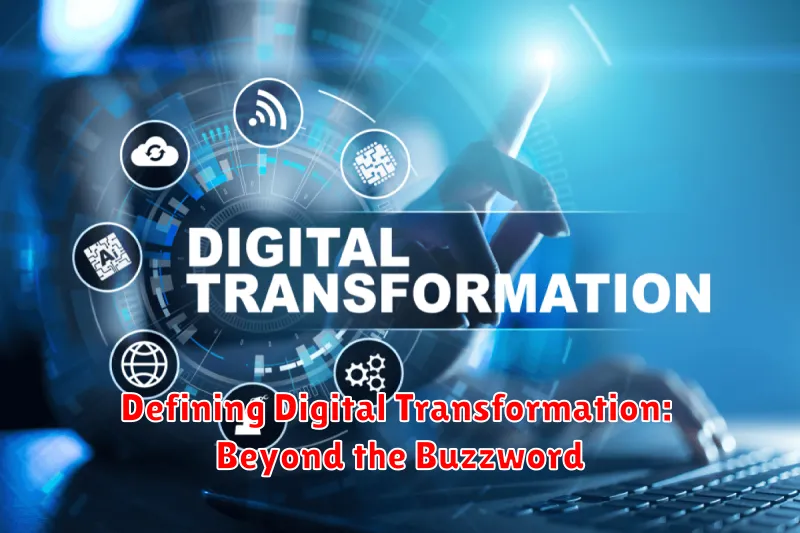
Digital transformation has become a ubiquitous term, often tossed around in boardrooms and industry discussions. But beyond the buzzword, what truly constitutes digital transformation? It’s not simply about adopting new technologies or embracing the latest gadgets. It’s about fundamentally shifting an organization’s culture, processes, and business models to leverage the power of digital technologies for strategic advantage.
At its core, digital transformation is about reimagining the customer experience, optimizing internal operations, and creating new sources of value through the innovative application of digital technologies. It’s about moving beyond incremental improvements and embracing bold, transformative initiatives that redefine how businesses operate and interact with the world.
Here are some key elements that define digital transformation:
- Customer-centricity: Placing the customer at the heart of every decision, understanding their evolving needs, and delivering personalized experiences through digital channels.
- Data-driven decision-making: Utilizing data analytics to gain actionable insights, optimize processes, and make informed decisions across all business functions.
- Agile and iterative development: Embracing a culture of continuous improvement, experimentation, and rapid iteration to adapt quickly to changing market demands.
- Cross-functional collaboration: Breaking down silos between departments and fostering collaboration across teams to maximize the impact of digital initiatives.
- Embracing new technologies: Adopting and integrating emerging technologies like artificial intelligence (AI), cloud computing, Internet of Things (IoT), and blockchain to drive innovation and efficiency.
Understanding the true meaning of digital transformation is crucial for organizations embarking on this journey. It’s not simply a technological upgrade; it’s a cultural shift that requires a clear vision, strategic planning, and a commitment to continuous innovation.
Key Drivers of Digital Transformation in Today’s World
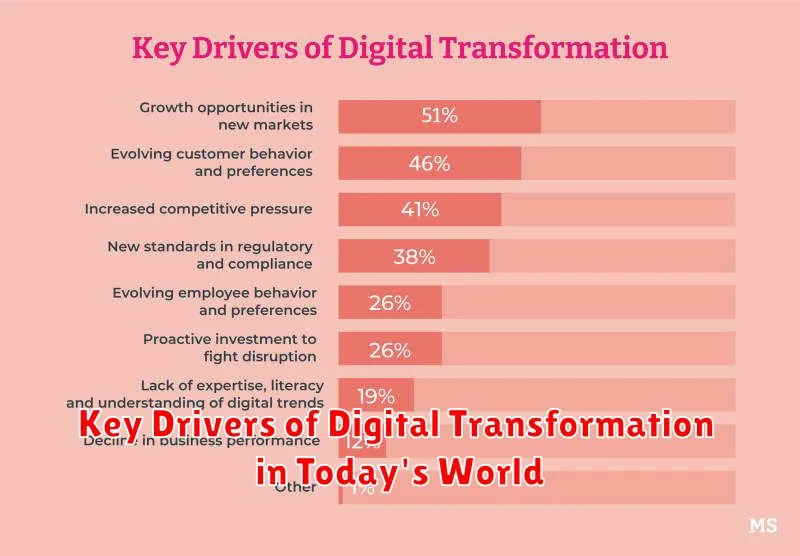
Digital transformation is no longer a choice, but a necessity for businesses to thrive in today’s rapidly evolving landscape. A confluence of powerful forces is driving this shift, pushing organizations to embrace digital technologies and processes to stay competitive.
One of the key drivers is the rise of customer expectations. Consumers are now digitally savvy, demanding seamless and personalized experiences across all touchpoints. Businesses must adapt to this new reality by leveraging digital channels to deliver personalized content, provide real-time support, and offer convenient self-service options.
Another key driver is the emergence of disruptive technologies. Advancements in artificial intelligence (AI), cloud computing, big data analytics, and the Internet of Things (IoT) are empowering businesses to automate processes, gain valuable insights, and create innovative products and services. These technologies are fundamentally changing the way organizations operate and interact with their customers.
Furthermore, the increasing globalization of markets is also driving digital transformation. Businesses are expanding their reach beyond national borders, requiring them to adopt digital solutions to manage operations, communicate with customers, and navigate diverse cultural nuances. Digital tools enable businesses to overcome geographical barriers and build global presence.
Finally, the growing competition within industries is pushing organizations to leverage digital transformation for a competitive edge. Businesses that fail to embrace digital technologies risk falling behind their rivals who are using these tools to improve efficiency, enhance customer experiences, and develop new revenue streams.
Understanding these key drivers is essential for organizations to embark on successful digital transformation journeys. By embracing the opportunities presented by these trends, businesses can position themselves for success in the digital age.
Developing a Winning Digital Transformation Strategy
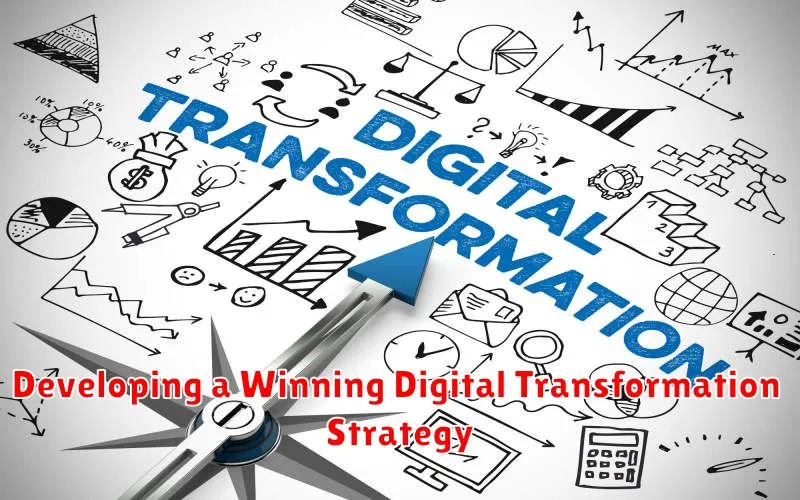
Digital transformation is no longer a choice; it’s a necessity for businesses to thrive in today’s rapidly evolving landscape. To navigate this journey successfully, a well-defined and actionable strategy is crucial. A winning strategy requires a holistic approach that considers your organization’s unique needs, goals, and challenges.
Here are some key elements of developing a winning digital transformation strategy:
1. Define Your Vision and Goals
Start by articulating a clear vision for your digital transformation. What do you want to achieve? What problems do you want to solve? Setting specific, measurable, achievable, relevant, and time-bound (SMART) goals will provide direction and help you track progress.
2. Conduct a Thorough Assessment
Before embarking on any changes, take a deep dive into your current state. Assess your existing technology infrastructure, processes, and capabilities. Identify areas for improvement and opportunities to leverage digital technologies. This analysis will inform your strategy and highlight key areas to prioritize.
3. Focus on Customer Experience
Digital transformation is ultimately about delivering a superior customer experience. Understand your customers’ needs, behaviors, and expectations in the digital age. Design solutions that enhance their journey, from awareness to purchase to post-sale support.
4. Embrace Agile Methodology
Digital transformation is an iterative process. Adopt an agile approach, allowing for flexibility and continuous improvement. Break down large projects into smaller, manageable tasks. Regularly assess progress and adapt your strategy based on learnings and changing market conditions.
5. Prioritize Data and Analytics
Data is the lifeblood of digital transformation. Establish robust data management and analytics capabilities. Use data to understand customer behavior, optimize processes, and make informed decisions. Leverage data insights to drive innovation and personalize the customer experience.
6. Invest in Technology and Talent
Digital transformation requires investments in technology and talent. Choose the right technology platforms and tools that align with your strategy. Develop your team’s digital skills and knowledge through training and development programs. Consider hiring experts in digital marketing, data analytics, cloud computing, and cybersecurity.
7. Foster a Culture of Innovation
Digital transformation requires a culture that embraces innovation and experimentation. Encourage employees to share ideas and contribute to the digital journey. Create a learning environment where everyone feels empowered to explore new opportunities and challenge the status quo.
Developing a winning digital transformation strategy is not a one-time event; it’s an ongoing process that requires continuous adaptation and evolution. By following these key elements, you can equip your organization for success in the digital age.
Leveraging Technology: Cloud, Data, and AI

In today’s rapidly evolving digital landscape, organizations are embracing technology to drive innovation and stay ahead of the curve. This digital transformation journey involves adopting and leveraging technologies such as cloud computing, data analytics, and artificial intelligence (AI) to optimize operations, enhance customer experiences, and unlock new growth opportunities.
Cloud computing provides scalable and flexible computing resources, enabling organizations to access and utilize computing power on demand. This eliminates the need for expensive on-premise infrastructure, allowing businesses to focus on core competencies while leveraging the latest technologies. Cloud platforms offer a wide range of services, including storage, databases, networking, and application development, empowering organizations to build and deploy applications quickly and efficiently.
Data analytics plays a crucial role in extracting valuable insights from vast amounts of data generated by businesses. By leveraging advanced analytics techniques and tools, organizations can gain a deeper understanding of customer behavior, market trends, and operational efficiency. This data-driven approach enables informed decision-making, leading to improved business outcomes.
Artificial intelligence (AI) is revolutionizing industries by automating tasks, enhancing decision-making, and creating new possibilities. AI-powered solutions can automate repetitive processes, analyze data to identify patterns and insights, and personalize customer interactions. From chatbots and virtual assistants to predictive analytics and fraud detection, AI is transforming the way businesses operate and interact with customers.
Leveraging these technologies effectively requires a strategic approach. Organizations need to define clear goals, establish robust data management practices, invest in skilled talent, and embrace a culture of innovation. By embracing the power of cloud, data, and AI, businesses can navigate the digital transformation journey successfully, achieving sustainable growth and competitive advantage.
Customer-Centricity: Putting Customers at the Heart of Transformation
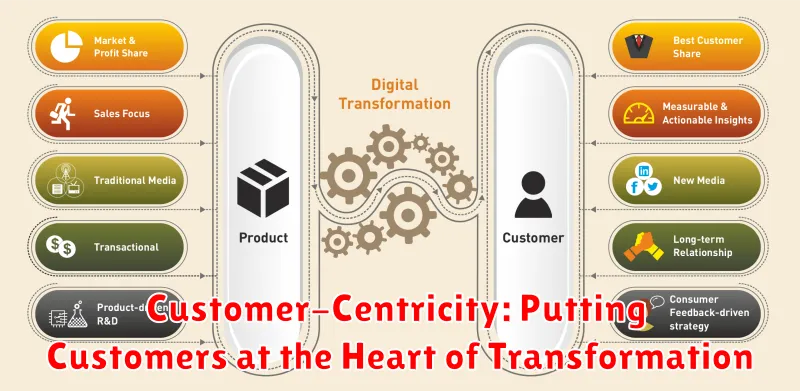
In the rapidly evolving digital landscape, businesses are constantly seeking new ways to stay ahead of the curve. Digital transformation has become a critical driver of success, but it’s not simply about adopting new technologies. At its core, true transformation is about understanding and meeting the needs of your customers. This is where customer-centricity comes in.
Customer-centricity is not just a buzzword; it’s a fundamental shift in mindset and strategy. It means putting the customer at the heart of every decision, from product development to marketing to customer service. It requires a deep understanding of your customers’ needs, desires, and pain points. This understanding allows you to tailor your offerings and experiences to deliver genuine value and create loyal advocates.
Here’s why customer-centricity is crucial for successful digital transformation:
- Enhanced Customer Experience: By focusing on customer needs, businesses can create seamless, personalized experiences across all touchpoints.
- Increased Customer Loyalty: Customers who feel valued and understood are more likely to stay loyal to your brand.
- Improved Business Outcomes: When you prioritize customer satisfaction, you see positive results in areas like revenue growth, customer retention, and brand reputation.
To embed customer-centricity into your digital transformation journey, consider these key strategies:
- Data-Driven Insights: Leverage data analytics to gain a comprehensive understanding of your customers’ behaviors, preferences, and feedback.
- Personalized Experiences: Utilize data to personalize interactions and create tailored experiences that resonate with each customer.
- Empowered Customer Service: Invest in technology and training to ensure your customer service teams are equipped to handle inquiries efficiently and effectively.
- Open Communication: Foster open and transparent communication channels to encourage feedback and build trust with your customers.
The digital transformation journey is an ongoing process, but by prioritizing customer-centricity, businesses can navigate the challenges and unlock tremendous growth potential. Remember, it’s not just about technology; it’s about understanding and meeting the needs of the people who matter most – your customers.
Agile and DevOps: Enabling Rapid Innovation
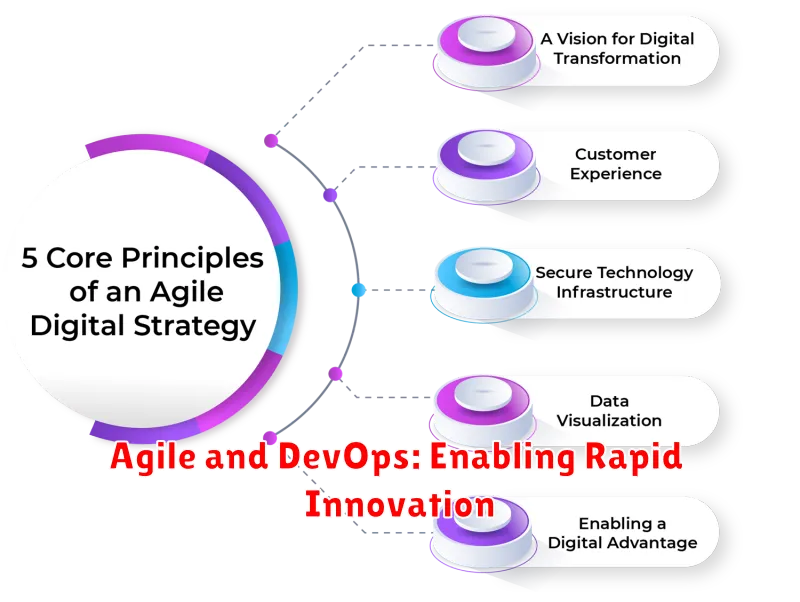
In today’s rapidly evolving digital landscape, organizations are under immense pressure to innovate and adapt quickly. The need to deliver new products and services faster than ever before is driving the adoption of agile and DevOps methodologies. These two powerful frameworks, when combined, can unlock a potent force for rapid innovation and business success.
Agile focuses on delivering value iteratively and incrementally. It emphasizes collaboration, flexibility, and continuous feedback loops, allowing teams to adapt quickly to changing market demands. DevOps, on the other hand, bridges the gap between development and operations teams, automating processes and fostering seamless collaboration. This integrated approach streamlines the software development lifecycle, enabling faster delivery of high-quality software.
The synergy between agile and DevOps creates a dynamic environment where innovation thrives. By embracing agile principles, teams can break down complex projects into smaller, manageable tasks, allowing for faster iterations and early feedback. DevOps automation tools streamline processes, reducing manual errors and accelerating delivery cycles. This rapid feedback loop allows organizations to continuously learn, adapt, and improve, leading to faster innovation and better products.
Moreover, agile and DevOps promote a culture of continuous improvement. By embracing experimentation, failure as a learning opportunity, and data-driven decision-making, organizations can foster an environment where innovation flourishes. This iterative approach allows teams to identify and address issues early on, preventing delays and ensuring a faster time to market.
In conclusion, agile and DevOps are not just methodologies; they are powerful tools for driving rapid innovation. By embracing these frameworks, organizations can unlock their potential for faster development cycles, improved product quality, and a more responsive approach to changing market demands. In today’s digital world, embracing agility and DevOps is no longer an option; it’s a necessity for survival and success.
Building a Culture of Innovation and Change Management
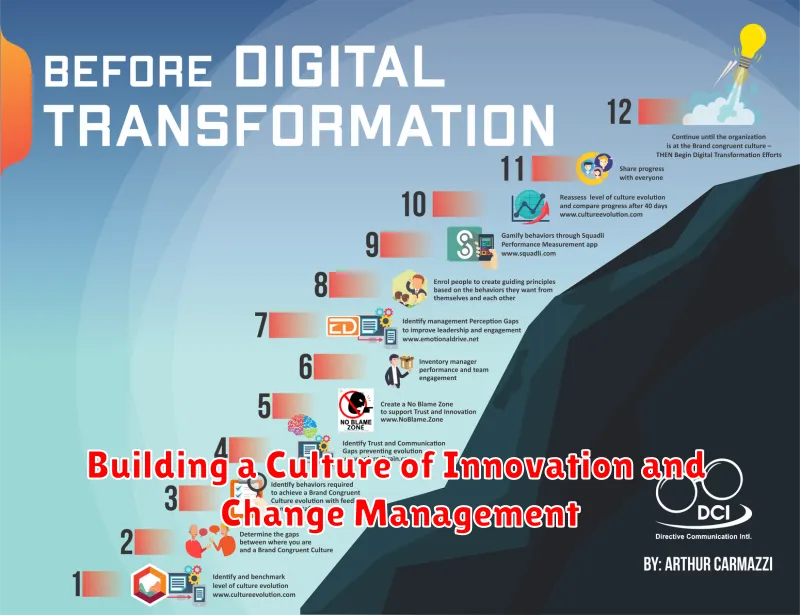
Digital transformation is a complex and multifaceted journey that requires a fundamental shift in an organization’s culture. To navigate this journey successfully, businesses must cultivate a culture of innovation and change management. This means embracing a mindset that encourages experimentation, continuous learning, and adaptability.
A key element of fostering a culture of innovation is creating an environment where employees feel empowered to think outside the box and contribute their ideas. This can be achieved through initiatives such as:
- Open communication channels: Encourage open dialogue and feedback at all levels of the organization.
- Cross-functional collaboration: Break down silos and facilitate teamwork between departments.
- Innovation programs: Implement programs that incentivize and support employee-driven ideas.
Change management is equally critical. It’s important to communicate clearly and transparently about the reasons behind changes, involve employees in the process, and provide ongoing support. Organizations must also cultivate a culture of continuous learning, encouraging employees to embrace new technologies and skill sets.
Building a culture of innovation and change management is an ongoing process that requires commitment from leadership. By fostering a culture that values experimentation, collaboration, and learning, organizations can position themselves for success in the digital age.
Measuring Success: KPIs and Metrics

As you embark on your digital transformation journey, it’s crucial to establish clear metrics and key performance indicators (KPIs) to track progress and measure success. These metrics provide valuable insights into the effectiveness of your initiatives and help you make data-driven decisions.
Key Performance Indicators (KPIs) are quantifiable measures that reflect the progress toward achieving your strategic goals. They provide a snapshot of your overall performance and help you identify areas for improvement.
Metrics are specific data points that contribute to the calculation of KPIs. They provide a more granular view of your performance and can be used to identify trends and patterns.
Here are some examples of common KPIs and metrics used in digital transformation:
- Customer Acquisition Cost (CAC): Measures the cost of acquiring a new customer. Metrics include advertising spend, lead generation cost, and sales conversion rate.
- Customer Lifetime Value (CLTV): Measures the total revenue generated by a customer over their lifetime. Metrics include average purchase value, customer retention rate, and frequency of purchase.
- Website Traffic: Measures the number of visitors to your website. Metrics include unique visitors, page views, and bounce rate.
- Conversion Rate: Measures the percentage of website visitors who complete a desired action, such as making a purchase or signing up for a newsletter. Metrics include conversion rate, click-through rate, and form submission rate.
- Employee Productivity: Measures the efficiency and effectiveness of your employees. Metrics include time spent on tasks, output, and error rate.
By regularly monitoring your KPIs and metrics, you can gain valuable insights into the effectiveness of your digital transformation efforts and make informed decisions to optimize your strategy.
Overcoming Challenges and Roadblocks

Digital transformation is a complex and multifaceted process that requires careful planning, execution, and adaptation. While the benefits of digital transformation are undeniable, the journey is not without its challenges and roadblocks. Here are some of the most common hurdles organizations face and strategies for overcoming them:
Resistance to Change
One of the biggest obstacles to digital transformation is resistance to change. Employees may be apprehensive about learning new technologies or adopting new ways of working. To overcome this challenge, organizations must engage their employees, communicate the benefits of digital transformation, and provide adequate training and support.
Lack of Skills
Digital transformation often requires a new set of skills and expertise. Organizations may need to recruit new talent or upskill their existing workforce. Investing in training programs, mentorship opportunities, and partnerships with educational institutions can help address this skill gap.
Data Silos
Data is the lifeblood of digital transformation. However, many organizations struggle with data silos, where data is stored in isolated systems and is difficult to access and analyze. Breaking down these silos requires adopting a data-driven culture, investing in data integration platforms, and establishing clear data governance policies.
Security Concerns
As organizations embrace digital technologies, they become more vulnerable to cyber threats. Strong cybersecurity measures are essential to protect sensitive data and ensure the continuity of operations. Organizations should invest in robust security solutions, implement strict access controls, and conduct regular security audits.
Lack of Clear Strategy
Without a clear strategy, digital transformation efforts can become disjointed and inefficient. Organizations need to define their goals, identify key initiatives, and establish a roadmap for implementation. Regular monitoring and evaluation are also crucial to ensure the transformation is on track.
Overcoming these challenges requires a combination of strategic planning, effective communication, and a commitment to continuous improvement. By addressing these roadblocks head-on, organizations can unlock the full potential of digital transformation and achieve lasting success.
Real-World Examples: Digital Transformation Success Stories

Digital transformation isn’t just a buzzword; it’s a powerful force reshaping industries and driving businesses forward. To understand the real impact of digital transformation, let’s dive into some inspiring success stories.
Netflix, once a DVD rental company, embraced digital transformation and became a streaming giant. They leveraged technology to offer on-demand content, personalize recommendations, and expand their global reach. This shift not only revolutionized how people consume entertainment but also disrupted the traditional media industry.
Amazon, an online retailer, has consistently been at the forefront of digital transformation. From its recommendation algorithms to its cloud computing platform (AWS), Amazon leverages technology to enhance customer experience, optimize operations, and create new revenue streams. They’ve become a global e-commerce powerhouse, demonstrating the transformative power of technology.
GE Healthcare, a medical technology company, embraced digital transformation to improve patient care. They developed digital platforms that connect patients, doctors, and medical devices, enabling better diagnosis, treatment planning, and personalized healthcare. This transformation not only enhanced patient outcomes but also strengthened GE’s position in the healthcare industry.
These examples highlight the transformative potential of digital transformation. By embracing technology, companies can enhance customer experiences, optimize operations, create new products and services, and gain a competitive edge in the digital age.

